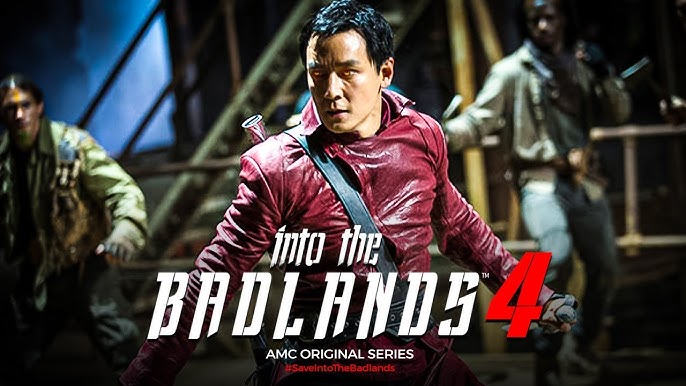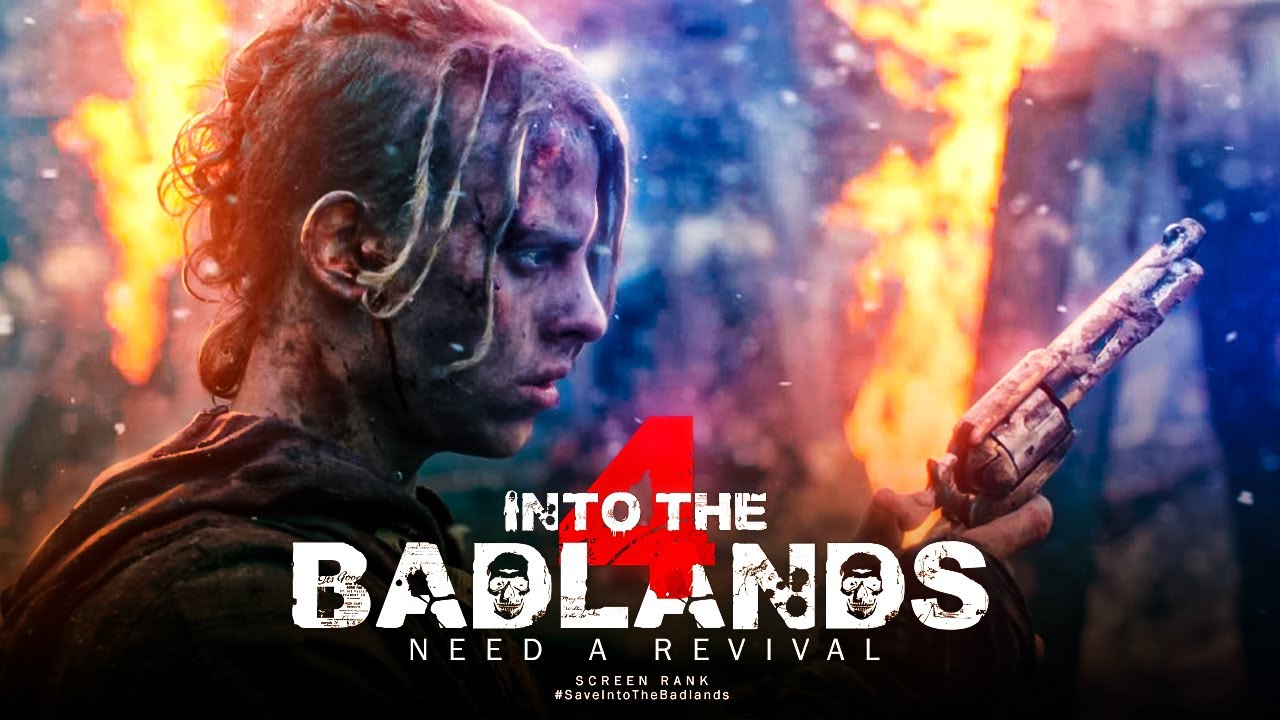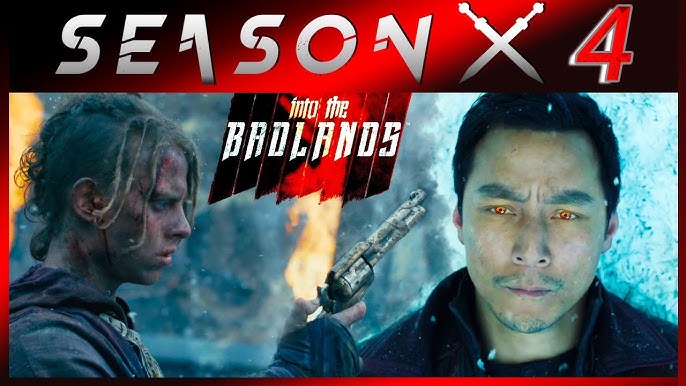Into the Badlands: Season 4 (2025)

Into the Badlands: Season 4 (2025)
Starring: Daniel Wu | Emily Beecham | Aidan Gillen | Lorraine Bruce
AMC’s Into the Badlands: Season 4 returns with a renewed intensity, pushing the boundaries of martial arts storytelling while deepening its exploration of political intrigue, personal ambition, and moral complexity. After the cataclysmic events of Season 3, the Badlands have been fundamentally altered. The once tightly controlled domains, ruled by powerful barons and their deadly clippers, are now in flux. Sunny (Daniel Wu), the stoic and formidable warrior, finds himself navigating this world stripped of the familiar order, forced to redefine his identity and purpose in a land where strength alone is not enough.
From the outset, Season 4 sets a darker, more contemplative tone. The absence of clippers—the very weapons that once symbolized power and control—creates a vacuum, reshaping social dynamics and heightening tension. Sunny, now a seasoned warrior and reluctant leader, faces the dual challenge of preserving his legacy and protecting those he cares about. Daniel Wu delivers a performance imbued with emotional depth, portraying a character whose stoicism is constantly tested by moral dilemmas, physical danger, and the complex motivations of allies and enemies alike. His journey in this season is both internal and external, balancing the raw intensity of combat with the nuanced struggles of leadership in a fractured world.
Emily Beecham returns as the Widow, a character whose ruthlessness is matched by intelligence and cunning. In Season 4, she evolves beyond mere opposition to Sunny; her motives are layered, often reflecting the tenuous balance between survival, ambition, and loyalty. Beecham’s performance adds a psychological complexity to the season, making the Widow both a fearsome adversary and a deeply human figure. Every encounter between Sunny and the Widow carries weight, whether in explosive combat or quiet strategy, showcasing the interplay of physical skill and mental acuity that defines the series.
Aidan Gillen’s schemer introduces another layer of intrigue. His character navigates the shifting power structures with strategic calculation, manipulating events and alliances to further his own ambitions. Gillen’s portrayal is a study in subtle menace, a foil to Sunny’s straightforward honor, highlighting how survival in the Badlands is as much about cunning as it is about martial prowess. Lorraine Bruce adds further tension, embodying characters whose loyalties and motivations are constantly in flux, keeping the audience guessing and enhancing the unpredictability of the narrative.
Season 4 emphasizes both the visual and thematic elements that have defined the series. The choreography remains a standout feature, combining wire-fu, acrobatics, and traditional martial arts in sequences that are breathtaking in scope and precision. Particularly memorable are the bamboo forest sequences, where characters move with almost supernatural agility, their fluid motions heightened by sweeping camera work and dynamic editing. Every fight sequence is crafted not only to thrill but also to reveal character and advance the plot, ensuring that action and narrative are inseparably linked.
Nathaniel Blume’s musical score elevates the storytelling, blending Eastern instrumentation with contemporary cinematic scoring to create an auditory landscape that complements both action and emotion. The music underscores tension-filled confrontations, intimate character moments, and sweeping visual sequences, enriching the viewer’s experience and enhancing the atmosphere of the Badlands. Sound and music in Season 4 function as narrative tools, heightening suspense, emphasizing emotional stakes, and lending a rhythmic cadence to the martial arts sequences.
One of the season’s central themes is the evolution of power and authority. With the absence of clippers, traditional hierarchies are destabilized. Barons and former rulers must contend with shifting allegiances, emergent threats, and the challenge of retaining control in a world that no longer obeys the old rules. Sunny’s role becomes pivotal; as someone who has mastered both combat and strategy, he is uniquely positioned to influence events. However, the season also explores the costs of leadership—both personal and ethical—emphasizing that survival in the Badlands requires difficult decisions and occasional compromise.
While the action sequences are exhilarating, Season 4 also invests heavily in character development and interpersonal dynamics. Sunny’s interactions with allies, former enemies, and new players highlight the complexities of trust, loyalty, and betrayal. Moments of quiet reflection—conversations by campfires, exchanges in abandoned buildings, and glimpses of past trauma—provide depth and humanity to a world defined by violence and uncertainty. These quieter moments balance the high-octane fight scenes, creating a rhythm that allows the narrative to breathe and giving viewers a deeper connection to the characters’ motivations and struggles.
The season’s pacing is ambitious, with multiple storylines converging as alliances shift and conflicts escalate. From political maneuvering to personal vendettas, the narrative is dense and multifaceted. While this complexity enriches the storytelling, it occasionally leaves certain character arcs underdeveloped, particularly as the rush toward the finale accelerates. Nevertheless, the emotional stakes remain high, with major confrontations delivering both narrative satisfaction and emotional resonance.
Season 4 also expands the world-building of the Badlands. The landscapes are as treacherous and visually striking as ever, from desolate wastelands to fortified strongholds, bamboo forests, and crumbling villages. Cinematography captures the stark beauty and peril of the terrain, using lighting, framing, and color to accentuate mood and tension. Each location is more than a backdrop; it informs the story, shaping strategies, battles, and character decisions.
At its core, Into the Badlands: Season 4 is a study of adaptation. Characters must navigate a rapidly changing world, where traditional tools of power are obsolete and survival depends on ingenuity, alliances, and the ability to anticipate threats. Sunny embodies this adaptability, demonstrating that true mastery comes not only from skill but also from wisdom, foresight, and resilience. His journey is mirrored by other characters, who must confront personal limitations, reconcile past actions, and redefine their place in the new order of the Badlands.
The climax of the season delivers a combination of spectacle and resolution. Converging plotlines result in high-stakes confrontations that test both physical prowess and strategic thinking. Fights are choreographed to emphasize tension, momentum, and the stakes of every decision. Emotional payoffs—reconciliations, betrayals, and sacrifices—add depth to the narrative, ensuring that the finale resonates on both an adrenaline-fueled and human level.
Ultimately, Season 4 succeeds in balancing the martial arts spectacle that fans expect with the narrative complexity and emotional depth that elevate the series. The performances of Daniel Wu, Emily Beecham, Aidan Gillen, and Lorraine Bruce ground the action in human experience, while Nathaniel Blume’s score and the intricate choreography maintain a sense of cinematic awe. The season’s visual and thematic elements work in concert to create a world that is both dangerous and mesmerizing, thrilling and thought-provoking.
While some character arcs could have benefited from additional development, the season as a whole demonstrates a commitment to layered storytelling, high-quality production, and innovative action choreography. Season 4 of Into the Badlands reaffirms the series’ status as a benchmark for martial arts drama on television, combining cinematic techniques, compelling characters, and pulse-pounding sequences to create a viewing experience that is both exciting and emotionally engaging.
Rating: 7.5/10
Related Movies









